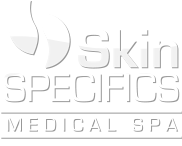 It is widely known that symmetry is one of the most important factors in determining the attractiveness of the face. For some, the jaw is enlarged and creates an imbalanced look or square-ness that can be very masculine for women, or can distort the facial angles. For men, a square jaw can be considered very attractive, but women who have this feature often desire softer angles, or a more heart shaped face.
It is widely known that symmetry is one of the most important factors in determining the attractiveness of the face. For some, the jaw is enlarged and creates an imbalanced look or square-ness that can be very masculine for women, or can distort the facial angles. For men, a square jaw can be considered very attractive, but women who have this feature often desire softer angles, or a more heart shaped face.
Prior to now, masseter reduction, or jaw reduction could only be treated with surgical procedures. These surgeries often had long recovery times and unnatural, imbalanced results. Today, however, thanks to injectable botox, the jawline can be reduced with very little pain and almost zero downtime.
What is Masseter Reduction?
Masseter Reduction is the minimization of the muscle that attaches to the jaw. Through varied surgical or non-surgical procedures, a patient can achieve a more oval, feminine jawline.
Botox has recently become the most popular technique for masseter reduction, as it is relatively painless and requires no downtime. In fact, patients can receive injections to the jaw area and return to their normal activities immediately.
The Masseter is the muscle attached to the lower jawbone, used for chewing.
For some patients, the masseter muscle is used during chewing or at night if they grind their jaw. This causes an enlargement to the muscle, which relaxes after the Botox injections are administered. A large buccal fat pad, a wide jaw angle, or lower face sagging can also be the cause of jaw widening.
Some patients have noticed that several treatments can have a permanent effect on the size of the jawline, but it is more common that treatments are semi-permanent and need to be performed every 6 months.
Candidates
Patients who suffer from an enlarged masseter muscle are the best candidates for a Botox Masseter Reduction.
The best way to determine if you have a larger masseter muscle is to clench your teeth and touch the outer jawline. If the muscle feels hard and enlarged, you may be an excellent candidate for this technique. Whether you have excessive jaw tension from chewing gum or grinding your teeth at night, you will see significant relaxation of the muscle within one week and a complete jawline reduction within six weeks.
Patients who are experiencing widening of the lower face due to age, will not see results from Botox treatments. Instead, they may need to consider alternative procedures such as ‘genioplasty,’ which is a complex surgery and requires longer recovery times.
What To Expect During The Consultation
During the initial consultation, we will examine your jawline and determine whether the shape is caused by an enlarged masseter, or other factors. If the masseter is treatable with Botox injections, an appointment will be set for the treatment and shouldn’t take more than thirty minutes to perform.
If the doctor determines that age or any other factors are the cause of your jaw widening, she will suggest alternate treatments and will provide you with information about these more invasive surgeries, answering any questions you may have.
Invasive jaw reduction surgeries require a second appointment where facial photography and x-rays are taken to accurately diagnose the condition of the jawbone and for the surgeon to establish a surgical plan for the correction of each specific case.
Procedure & Care
During the procedure, we will administer a dose of between 25-30 units of botox per masseter; one is located on each side of the jawline. If one side is larger than the other, she will administer 5-10 additional units of botox to the larger side.
For the most dramatic effect, injections can be focused precisely where the three muscles overlap, this is also the point where the muscles are attached to the jawbone. By focusing on the reduction of the muscles in this area, the size of the bone can also reduce over time, giving an even more slimmed look to the jaw.
Follow up treatments are important to determine the response of the masseter muscle to the botox injections.
Usually treatments are given after 6 and 12 weeks following the first treatment. Some patients will feel satisfied with two to three treatments and others will require more. In order to maintain the results of the masseter reduction, it is advised to receive ongoing treatments of 25 to 30 units on each side every four to six months, two to three times the first year and one to two times the following year.
Immediately after the injections there may be some redness, but that will be gone soon after. Patients should not lie down or rest on their jaw for up to three hours following their treatment so that the Botox does not migrate.
Alternative Treatments
Facial Reshaping
Facial Reshaping process involves the use of fillers to enhance areas of the face responsible for creating the oval shape. This helps to create a more balanced look. The additional facial areas to consider are the chin and cheekbones or mid face.
Chin
Fillers such as Juvéderm Voluma or Radiesse are injected into the chin to enhance the size and prominence.
Cheek Bones or Mid Face
High, wide cheekbones support the oval shape of the face. During this procedure, Juvéderm Voluma is added to the cheek and mid face in addition to a masseter reduction. This widens the cheeks and mid face and hollows out the lower part of the face, resulting in an ideal shape.
Temples
The temples are crucial for a youthful face. This procedure involves fillers such as Radiesse or Juvéderm Voluma and is performed on older clients more so than younger clients, as temple reduction is generally a result of aging.
Additional Alternatives (not performed by Skin Specifics)
Surgical Jaw Reduction
Also known as Jaw Shaving, this procedure is highly invasive and can be very risky. This surgery usually involves the shaving or cutting off of a portion of the mandible. Depending on the patient, different areas of the jaw would be reduced by way of a micro-saw.
Small incisions are usually made inside the mouth to avoid any visible scars. During the jaw portion of the surgery, larger areas of the mandible are altered with a micro-saw, curved down from back to front for a rounded shape. Once the proper amount of bone and muscle has been removed, the incision is closed with dissolvable stitches.
For chin shaping, incisions are made to the front of the mouth and are also sutured with dissolvable stitches. Both the bone and soft tissues are shaped to achieve the most feminine look to the chin area.
After the procedure, the mouth is cleaned with prescription mouthwash several times a day. Most patients are required to stay overnight at the hospital after surgery. Swelling, bruising, and pain are normal after these procedures are performed and it may take up to six weeks for the results to be noticeable.
Because each patient is unique, there are techniques to address and correct each shape.
V-line Mandibular Contouring
This technique reshapes the bone around the jaw corners and also changes the shape of the chin to allow for a softer and more feminine look. In some cases, the procedure also reduces the masseter muscle to narrow the jaw even more.
Long Curved Mandibular Contouring
This surgery is performed to create a gentler curve along the entire jaw. This surgery smooths the lower line of the jaw and slims the width of the jaw, resulting in a more attractive face and jawline.
Cortex Osteotomy
If the chin is relatively sharp, but the jawline is wider, the only area trimmed would be the mandibular cortex. Otherwise both the jawline and the chin would be cut to the appropriate proportions. During this surgery, the outer cortical bone is cut from the jaw, slimming the front area of the jaw. This surgery also reduces the muscle volume in the front of the jaw, which gives a slimmer frontal view as well.
Buccal Fat Pad Removal
The buccal fat pad is one of many fat masses in the cheek. The surgical removal of this pad can reduce cheek size and prominence, but it carries the risk of damage to the facial nerves. This could result in loss of sensation, or issues with saliva production. As a result, surgeons often avoid the procedure.
Genioplasty
This surgery is used to reduce the chin size or to reposition the chin. There are several types of genioplasty, including osseous, sliding, asymmetric, chin point, and implant genioplasty. Depending on the type of genioplasty performed, the surgery process differs. Generally, however, the bone within the chin is broken and repositioned, either further forward or back to a new position. It is then fixed in place with screws and metal plates. This technique is permanent because the bones eventually fuse into place during healing. Post surgery swelling can last for up to two weeks and recovery is quite painful.
Cost
Due to the varied needs of each patient, it is imperative for a consultation to be performed in order to decipher potential costs. For Botox Masseter Reduction, the price will be significantly less than surgically invasive procedures such as Surgical Jaw Contouring. Precise costs will be determined after a thorough consultation is carried out.


